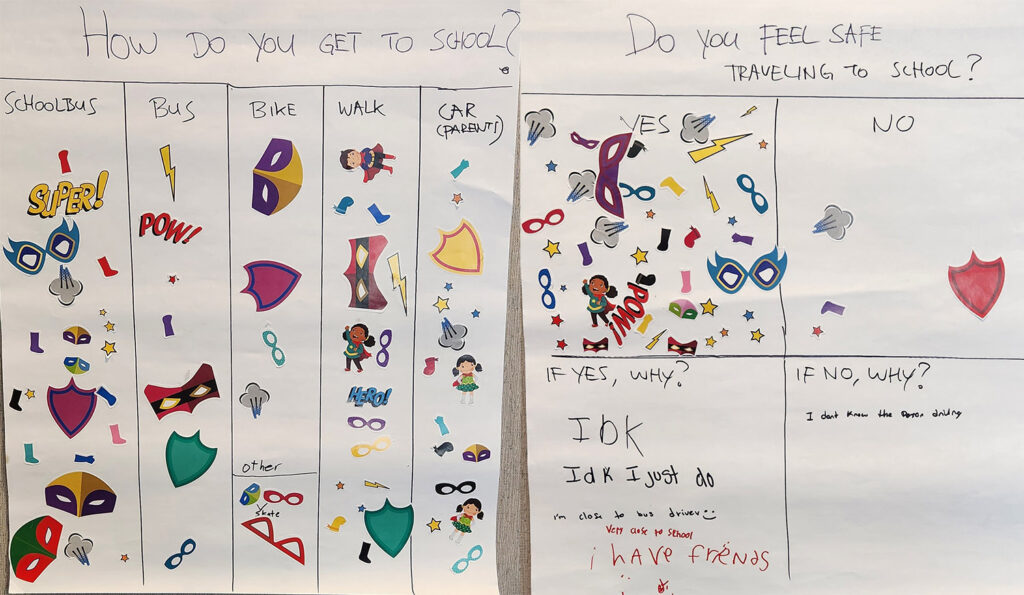Summer is over and many families are getting back into their regular back to school routine. However, for many working families and especially single parent families, this also brings back worries about how to overcome school and childcare transportation barriers.
To learn more about the school and childcare transportation needs in Lancaster, I attended several back-to-school events this summer. For example, at the McCaskey East High School open house on 15 August 2024 I asked students how they commute to school and whether they feel safe while commuting.
These posters show responses collected from attending families comprising of both elementary and high school aged students. Most students indicated they get to school by walking, taking the bus or having their parents drive them. A large majority indicated they feel safe.

In addition, I had the privilege of interviewing Harvard Graduate School of Education Professor of Practice in Education Policy and Administration Paul Reville and get his comments. I also asked Erin Conahan, Coordinator of School, Family, & Community Partnerships at the School District of Lancaster (SDOL) for her reaction.
Need for better school and childcare transportation
At the School District of Lancaster, and in communities across the country, access to high-quality childcare and safe spaces before and after school is essential for working families.
In Lancaster, this challenge is complicated by limited access to reliable transportation, as Erin Conahan describes. SDOL is a district where most students walk to school. As a result, many familes struggle to get their children, especially younger ones, to childcare and after-school programs if they aren’t within a safe and reasonable walking distance.
Finding solutions through collaborative action
Erin Conahan said the district already incurs significant transportation costs during the school day. Adding before and after-school transportation could increase expenses by hundreds of thousands of dollars annually. “Although we work to leverage partnerships, resources, and grant funds, the cost remains a major barrier,” she said.
According to Professor Paul Reville, improving the quality of children’s lives not only in class but also outside of school is crucial for healthy child development.
“Transportation is a means to an end,” he said. “You can have a first-class education system, but if you don’t have a transportation system to get people there, it doesn’t really matter. So when we cost out what it is going to cost a family or a community to provide these services, we have to take transportation into account.”
He advises the Lancaster community to look at place-based collaborative action to identify gaps in the transportation system and address issues collectively. It is often in local communities like Lancaster where people know one another and they have been together for long periods of time. They can come together at a common table and solve persistent problems, like transportation, if they just have the focus and the challenge from civic leaders to do so, he said.
Erin Conahan said she also believes in a collective impact approach, one that involves collaboration between the district, childcare providers, employers, funders, and the community. It is the best way to ensure all children have safe, accessible places to go in Lancaster.
It is good for children, it is good for families and it is good ultimately for the community. “If young people do well, a city will thrive,” professor Paul Reville said.
Bryant Heng is a Bloomberg Harvard City Hall Fellow studying how Lancaster City can make transportation better. Learn more here.